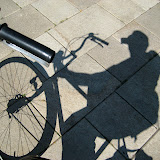 Theme: the Westergasfabriek Park (WGF) wants to develop into a park of the 21st century, in which new media, new forms of representation and identity, novel forms of social networks, and technologies merge to create and sustain new forms of cultural expression and production.
Theme: the Westergasfabriek Park (WGF) wants to develop into a park of the 21st century, in which new media, new forms of representation and identity, novel forms of social networks, and technologies merge to create and sustain new forms of cultural expression and production.General questions for the projects:
- the Westergasfabriek Park (WGF) as test bed for scientific and scholarly research. What are the possibilities? Which topics are most suitable? And which facilities, work routines and technologies are needed to realize these?
- the Westergasfabriek as test bed for applications. What are the possibilities for commercial and public sector partners to use the WGF as a Living Lab? What infrastructures and tools are needed? What would this mean for both private and public partners?
- study the role of the WGF as facilitator for the development of new media cultures. Which parts of the international scene of multimedia artists and designers should be the main target audience for the WGF? What has the WGF to offer them?
- tagging and tracking visitors to the park. To what extent can it be useful to offer monitoring and tracking services during events (like massive parties, musical festivals, conferences, workshops, theatre, and exhibitions)? What are the dilemmas, ethical and political? What kind of concepts should be developed? This project can be split into sub-projects, eg a projects on the use of Radio Frequency Identity (RFID) tags in networking applications.
- design an Interactive Network Map of the WGF. What is their present network? How do they position themselves? Can this be visualized? Can lacunae be identified?
- what is the potential of the WGF to perform new forms of survey research? For example, study how young tourists are using the park and what they would want in the near future. How does this relate to how they see themselves?
- the development of new concepts of “pathfinding” in and around the park. This relates to an earlier student project on pathfinding.
- can mobile phones, game screens, and mp3 players etc. be used to show visual arts and drama? In other words, how can we couple performing arts to locative media? What would it mean for the technology, and what for the art?
- can the park be “tagged” with social networks, for example link a particular location in the park to a particular community? Would this make sense? How could it be done?
- what is the potential of locative gaming?
- how sustainable is the WGF presently? How can this be improved by measures on energy use, environmental protection etc.?
 |
| Westergasf |








